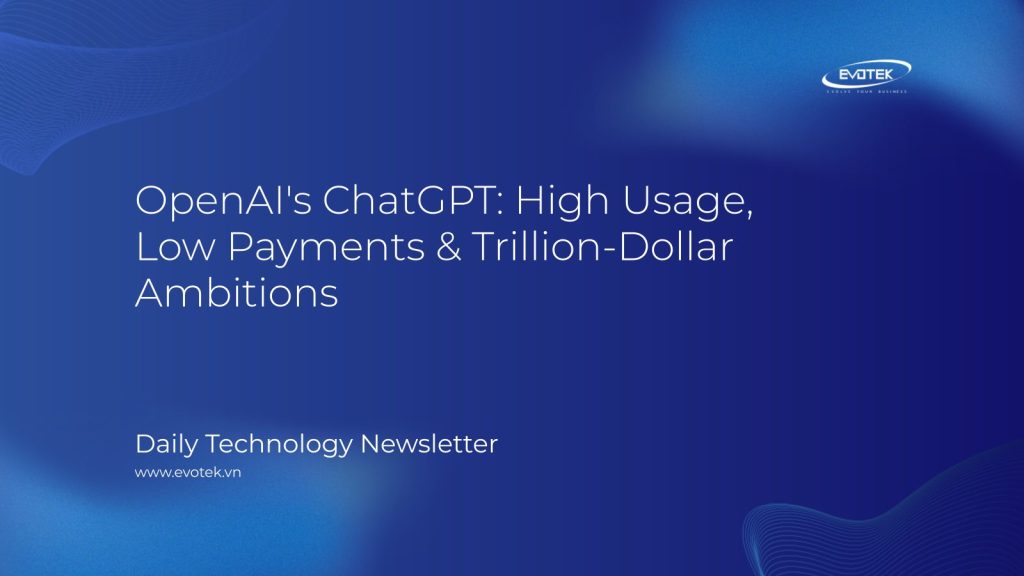OpenAI, the powerhouse behind the widely popular ChatGPT, is navigating a perplexing paradox: immense user adoption clashes with significant financial losses. Despite its groundbreaking AI attracting millions, the company struggles to convert its vast user base into paying subscribers, raising questions about its long-term profitability amidst ambitious expansion plans.
The Financial Realities of AI Dominance
Recent reports paint a challenging financial picture for the AI giant. During the first half of 2025, OpenAI reportedly generated $4.3 billion in revenue, yet simultaneously posted a staggering net loss of $13.5 billion. A substantial portion of this deficit, over half, is attributed to “remeasurement of convertible interest rights,” linked to billions in convertible equity issued to early investors.
Separate analyses, such as one from The Financial Times, indicate an operating loss of approximately $8 billion for the same period, suggesting that even core operations are deeply in the red, excluding these equity obligations. While OpenAI projects an impressive $13 billion in annual recurring revenue (ARR) – a figure based on recent monthly performance – some industry observers view this projection with skepticism, given the current financial trends.
The Monetization Challenge: Popularity vs. Profit
The core of OpenAI’s monetization struggle lies with ChatGPT. While the service reportedly contributes about 70 percent of the company’s recurring revenue, an astonishing 95 percent of its 800 million users access it without paying a dime. This means a mere 5 percent of ChatGPT’s massive user base opts for paid subscriptions, which range from $20 to $200 per month.
This challenge isn’t unique to OpenAI. Data from Menlo Ventures suggests that across the broader generative AI landscape, only 3 percent of the 1.8 billion users globally are willing to pay for these advanced services. Despite these low conversion rates, Menlo Ventures optimistically identifies this “gap between usage and payment” as a significant future opportunity. However, a ZDNET/Aberdeen study offers a dose of caution, revealing that only 8 percent of respondents would actually pay extra for AI features.
A Trillion-Dollar Bet on Infrastructure and Future Growth
Despite the current financial headwinds, OpenAI is forging ahead with colossal infrastructure investments. CEO Sam Altman has committed to securing over 26 gigawatts of datacenter capacity from industry titans like AMD, Broadcom, Nvidia, and Oracle by the decade’s end, a monumental undertaking projected to cost more than $1 trillion. This spending spree is partly fueled by partners such as Nvidia, which plans to invest $100 billion in OpenAI, likely in the form of GPU credits. Such large-scale, intertwined investments have led more than a few analysts to draw parallels to an economic bubble.
Exploring New Revenue Avenues
To diversify its income streams, OpenAI is exploring other potential revenue channels. These include charging commissions for e-commerce transactions facilitated through ChatGPT integrations and incorporating advertising. While CEO Sam Altman initially dismissed the idea of ads, it’s now under active consideration. The path to ad-supported AI, however, has proven difficult for rivals like Perplexity, which recently paused new advertisers to re-evaluate its strategy.
Dominance and the Path to Profitability
Despite its financial challenges, OpenAI remains a dominant force in the generative AI space. Its platforms account for approximately 80 percent of all web traffic for generative AI tools, capturing 190 million of the 240 million average daily visits. The ultimate challenge for OpenAI is clear: transforming its incredibly popular and innovative products into a sustainable, profitable enterprise. While the user engagement is undeniable, the journey to convince a significant portion of its users to pay for what they currently receive for free is easier said than done. The path to consistent profitability still lies ahead.

 日本語
日本語 한국어
한국어 Tiếng Việt
Tiếng Việt 简体中文
简体中文